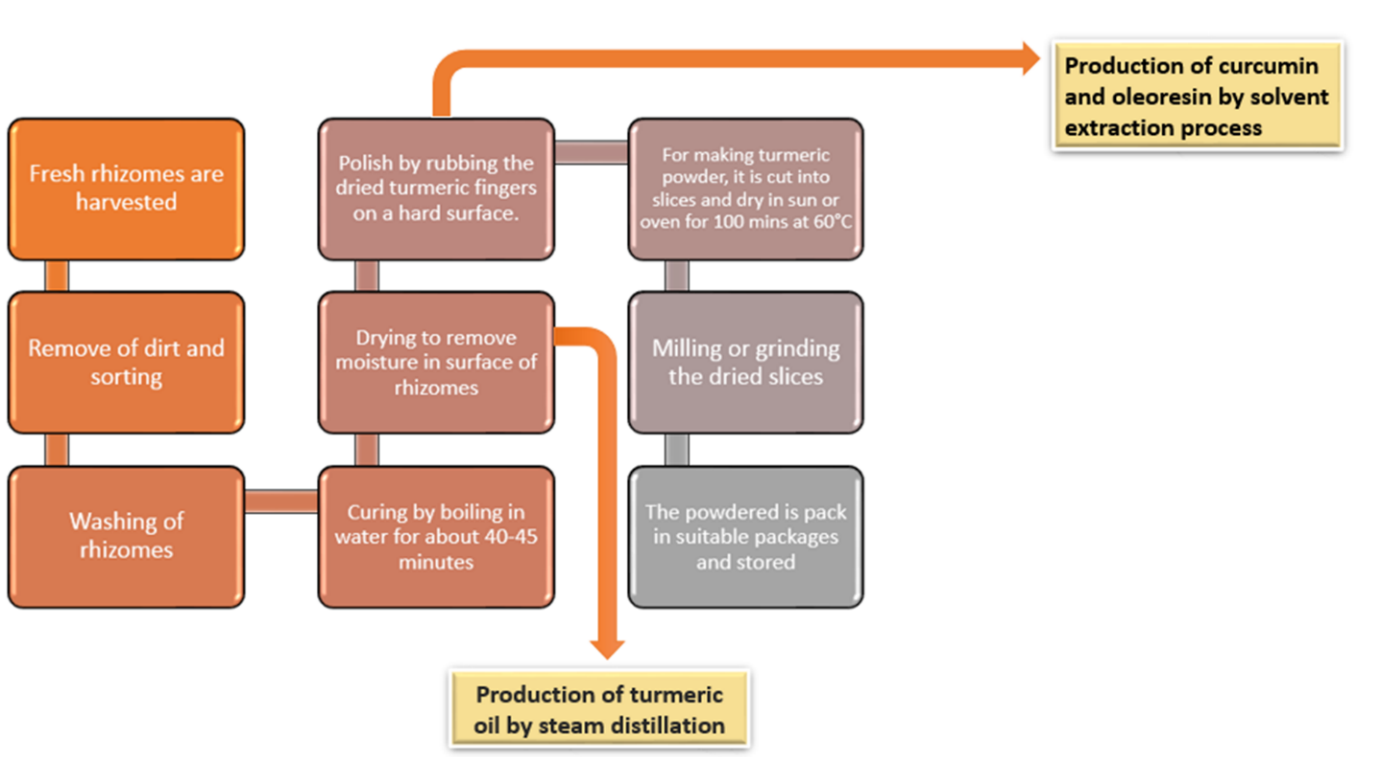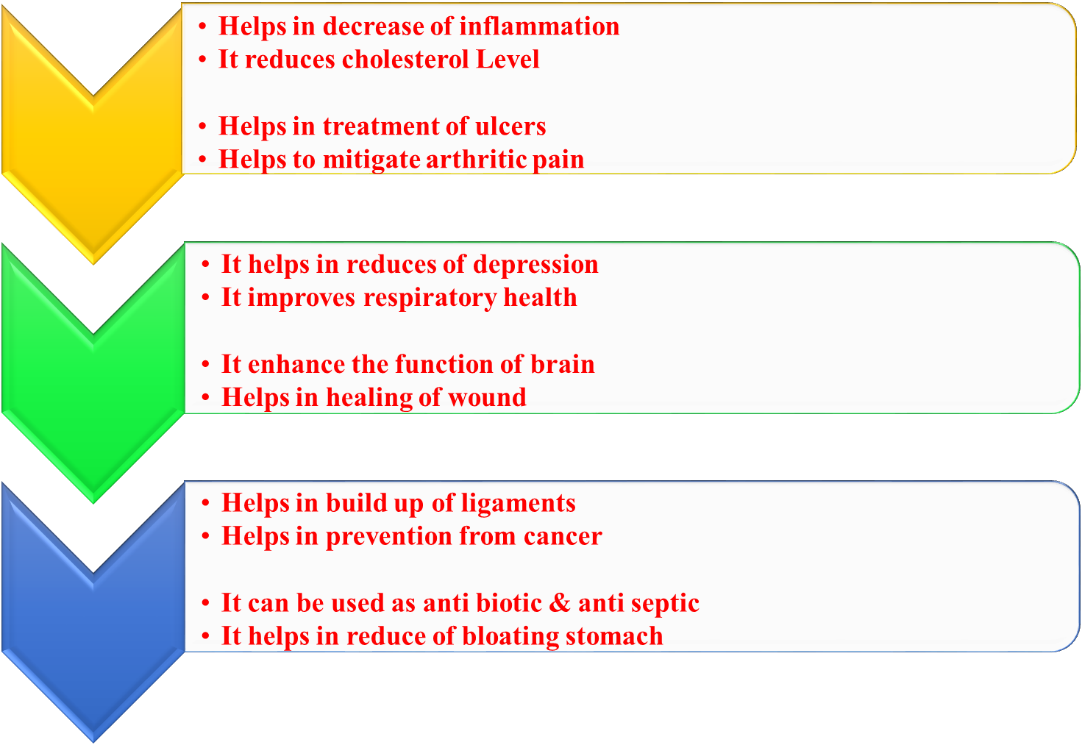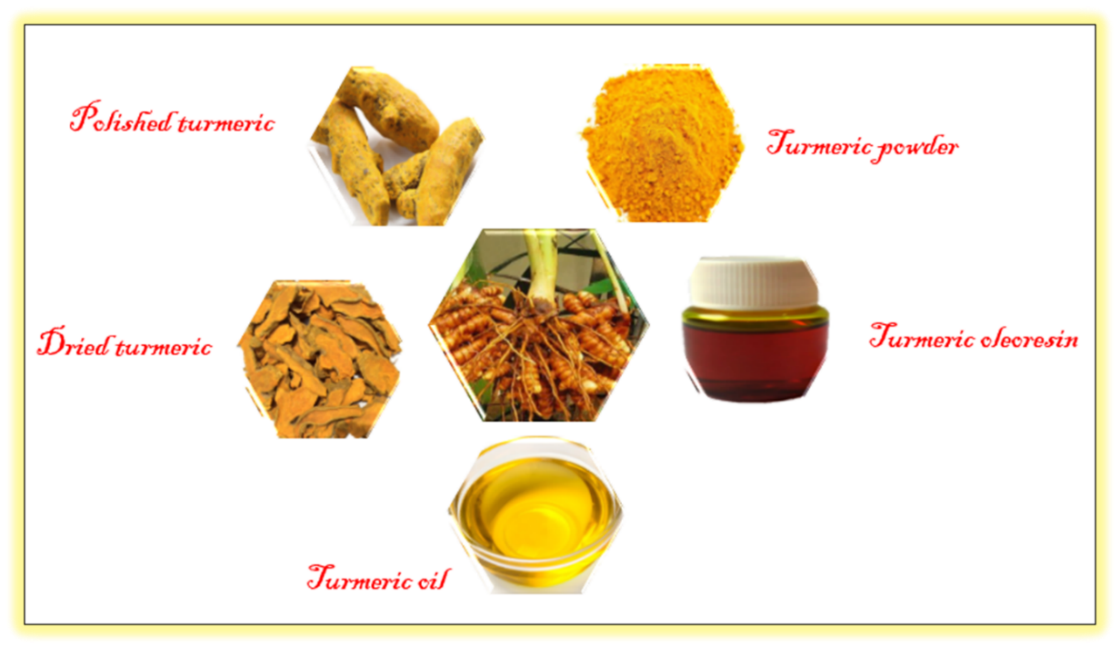

Turmeric is an herbaceous perennial plant and major spice of India. The rhizome is considered an economic part and belongs to the family of “Zingiberaceae”. In India, it is known as “golden spice” because of its yellow attractive color. Among other countries, India is the largest producer and exporter of turmeric. It is popularly used for food coloring and adds flavors to the curry. It imparts a unique fragrance to our foods. In Indian pickles, it is an ingredient for preservation and taste. Turmeric derivatives are also added to cosmetics and medicines. It is also used in manufactured food products such as canned beverages, dairy products, baked products, ice cream, yellow cakes, yogurt, orange juice, biscuits, popcorn, sweets, cake icings, cereals, sauces, and gelatins.

Fig.1: Steps for turmeric processing
The main compound present in turmeric is curcumin and it is the reason for predominant flavour, taste and colour. Curcumin is also used for therapeutic effects. Additionally, turmeric rhizome contains volatile oil and turmerone, arturmerone, and zingiberene are responsible for aroma in turmeric. It is also a good source of ω-3 fatty acid and α-linolenic acid. Beginning from the ancient era, turmeric is utilized as folk medicine and is well known for its nutritional properties. In natural medicine, it is utilized against various ailments, mostly in Ayurvedic medicine and Traditional Chinese Medicine (TCM). Its special active properties are anti-oxidant, anti-inflammatory, anti-septic, anti-microbial and anti-cancer. Moreover, it has various essential vitamins and minerals like beta carotene, ascorbic acid (Vitamin C), pyridoxine (Vitamin B6), niacin (Vitamin B3), calcium, flavonoids, fibre, iron, potassium and zinc. Experts convey that turmeric can be used as an immunity booster and recommend having it regularly.

Fig.2: Important health benefits of turmeric

Fig.3: Value-added products of turmeric
Turmeric rhizomes are ready for harvesting after 8 to 10 months when the ground above plant parts are dried up. The stalks are cut, irrigated lightly and harvested by digging. There are some steps that needed to be strictly followed for better shelf life and long storage. Dried whole rhizomes are exported to market as well as it is available in processed form i.e., in powder form. Today, according to the desirable need of the consumer and demand in the market; it is produced in various appearances for different purposes.
(Content shared by Dr. Yengkhom Disco Singh, Rina Ningthoujam, Budhindra Nath Hazarika, Department of Post-Harvest Technology, College of Horticulture and Forestry, Central Agricultural University, Arunachal Pradesh; Avanindra Kumar Mishra, Deputy Director of Research, Central Agricultural University, Manipur; Punuri Jayasekhar Babu, Mizoram University)